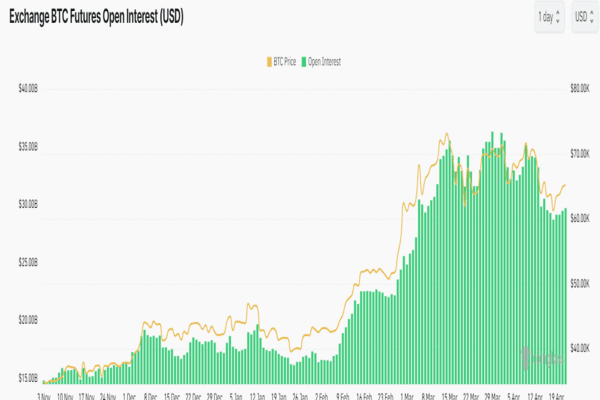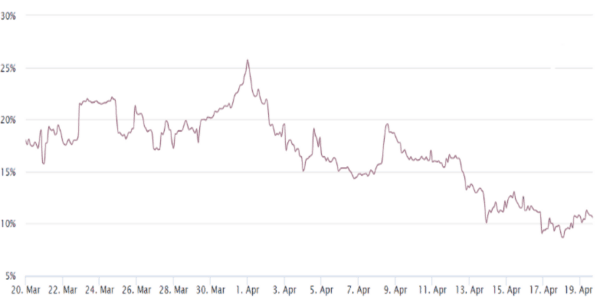The bitcoin price dropped to $59,640, giving a dip of 6% on April 19. However, a quick recovery in the Bitcoin price helped secure support above $64,500.
The early price recovery is the outcome of Bitcoin halving, scheduled on April 20. This attracts the attention of traditional media and spot Bitcoin Exchange Traded Fund (ETF) providers. This event helps to decrease the adverse impacts of wider socio economic challenges.
The current instability and geographical landscape increase market volatility. As tensions in the Middle East rise, Bitcoin’s price movement appears to track global events. Traders took a breath of relief after the Iranian officials said that they were not planning to retaliate.
Robust $60K Support: Few Liquidations in Volatile Market
Coinglass shared data on the Bitcoin price swinging at $5,850 on April 19. Despite this price, liquidity in the BTC remains very low, totaling around $54 million. This indicates the borrowing of people was low, and this is a good sign; $60,000 has become psychological support for the traders.
Amina Bank, a crypto analyst, suggested that geographical tension is not only an indicator for market sentiments. As noted in their research, “Trading volumes, ETF flows, and news coming out of US inflation data are also pivotal.” These analyses indicate miners, who are selling off their Bitcoins because of Halving so they can secure more profit before the reward reduction.
From an economic perspective, labor support in the United States strengthens a 0.7% growth in retail sales. The US Federal Reserve announced plans to reduce interest rates in a couple of months. The 5% decline of the S&P 500 index since its all-time high of 5,265 on March 28 reflects this skepticism.
Bitcoin Halving Proximity Doesn’t Impact BTC Futures Metrics
According to recent Bitcoin futures data, the current interest rate stands at $29.8 billion, a bit higher than $28.6 billion two days ago. This indicates that Halving event hasn’t sparked in demand for leverage.

Source: Coinglass
The demand of future Bitcoin decreases as compared to last week’s $35.3 billion. This indicates that there is no increase in demand due to Bitcoin Halving.
To figure out the professional traders activities after a change in price, look at BTC futures premium. Mostly, this number is 5% to 10% higher on a yearly basis compared to regular prices. It means sellers want more money if they have to wait longer to get paid.

Source: Laevitas
Currently, BTC futures are 11%, which is a bullish indication; however, they are 16% lower than last week. Even when $60,000 was achieved again on April 19, the premium stands 9% high. This indicates that people are not opening short term bets on the Halving event.

